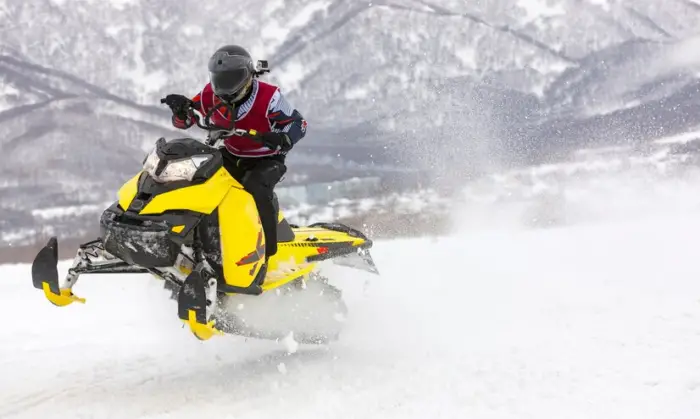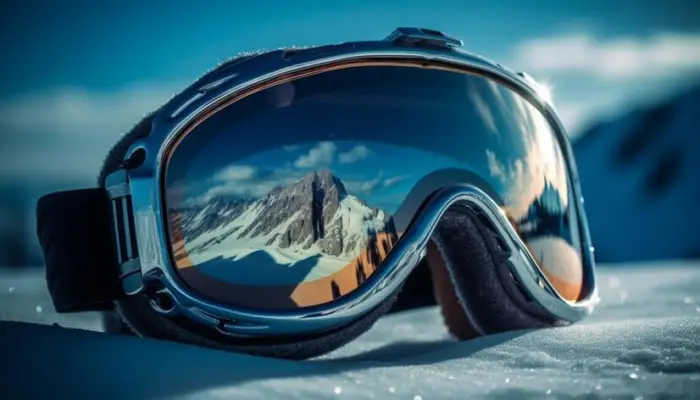So your goggles get fogged up frequently and you’re troubled, am I right? That’s why it is essential to do your research before buying something.
No worries anymore, because I did a lot of research on your behalf and you just have to read the article. So read till the end!
Why Do The Lens Of The Goggles Get Foggy On The Snow?

Snowmobile goggles can get fogged due to temperature and differences between the inside and outside of the goggles. The outside environment is very cold, the temperature is literally a single digit. On the contrary, the inside environment of the goggles is pretty warm. This is when the goggles start to get foggy.
When wearing the goggles on the snow, warm, moist air from your face gets attached to the inside of the goggles. As the warm air meets the cold surface of the lens from the outside’s cold temperature, it condenses into water droplets, creating a fog inside the goggles and blocking your eyesight.
How To Prevent Fogging Up On Goggles?

Keeping your snowmobile goggles from fogging up is essential for maintaining clear visibility and a safe riding experience. Here are some tips to prevent fogging:
Anti-Fog Coating
Ensure your goggles have an anti-fog coating on the inside of the lens. This coating helps prevent condensation buildup on the outside and keeps the lens clear.
Proper Ventilation
Good ventilation is essentially important for goggles. If your goggles do not have ventilation, then they are probably sunglasses! Look for goggles with effective ventilation systems that allow air to circulate.
Avoid Overheating
Do not overdress while you’re going to snowmobile. Just wear a few warm layers. Do not wear extra layers, as excessive heat and perspiration can contribute to fogging. Dress appropriately for the weather and avoid covering the vents on your helmet.
Goggles Positioning
Make sure your goggles fit comfortably on your face, with a good seal around the edges. A proper fit helps prevent warm, moist air from reaching the lens. I have mentioned in one of my previous articles that wearing a strap is generally not necessary but for times like these, you need them.
Keep Goggles Dry
Before using them, ensure your goggles are dry and free from any snow or moisture. Even if they’re dry, wipe them before using. Wipe them nicely so there’s no room for any moisture buildup for some time.
Avoid Touching the Inside
For the people who are clumsy like me, sorry for calling y’all out but try not to touch the inside of the lens with your fingers, as the oils from your skin can contribute to fogging. And if you can’t help it, then at least carry a lens cleaning spray and cloth with you, in case you accidentally touch the lens.
Use Anti-Fog Solutions
Some anti-fog sprays or wipes are available in the market. These sprays create a hydrophilic layer outside the lens which causes the water to spread out like a rectangular film on top of your goggles, rather than becoming droplets. Applying these solutions to the inside of the lens can provide an extra layer of fog resistance.
Limit Goggle Removal
Again, for those impatient people who keep getting annoyed and irritated because their goggles are too tight or too loose. Buy comfortable goggles, first of all, so that you can avoid removing your goggles frequently during rides, as this can disrupt the seal and introduce warm air, leading to fogging.
Use Breath Deflectors
Some helmets come with breath deflectors that direct your breath away from the goggles, reducing the chances of fogging. It is a small device that is fit in front of the mouth. They create a barrier to direct the breaths from our mouth to somewhere other than the helmet guard or the goggles. Make sure to at least have a breath deflector attached to your helmet in case your goggles do not have a vent system.
Keep Moving
This is unnecessary to say because people rarely stop in their tracks while snowmobiling. I mean, who will!? But still when you’re riding just keep moving to allow the transport of air around the goggles. Stagnant air inside the goggles causes more fogging.
Conclusion
This might seem a very small mistake, but fogged lenses in winter sports goggles and helmets can lead to serious accidents. Invest in properly ventilated goggles and helmets with anti-fog coatings. Take every possible safety precaution before stepping on the snow for snowmobiling, snowboarding, skiing, or any winter sport.
I hope I was able to clear all your doubts, stay safe!

